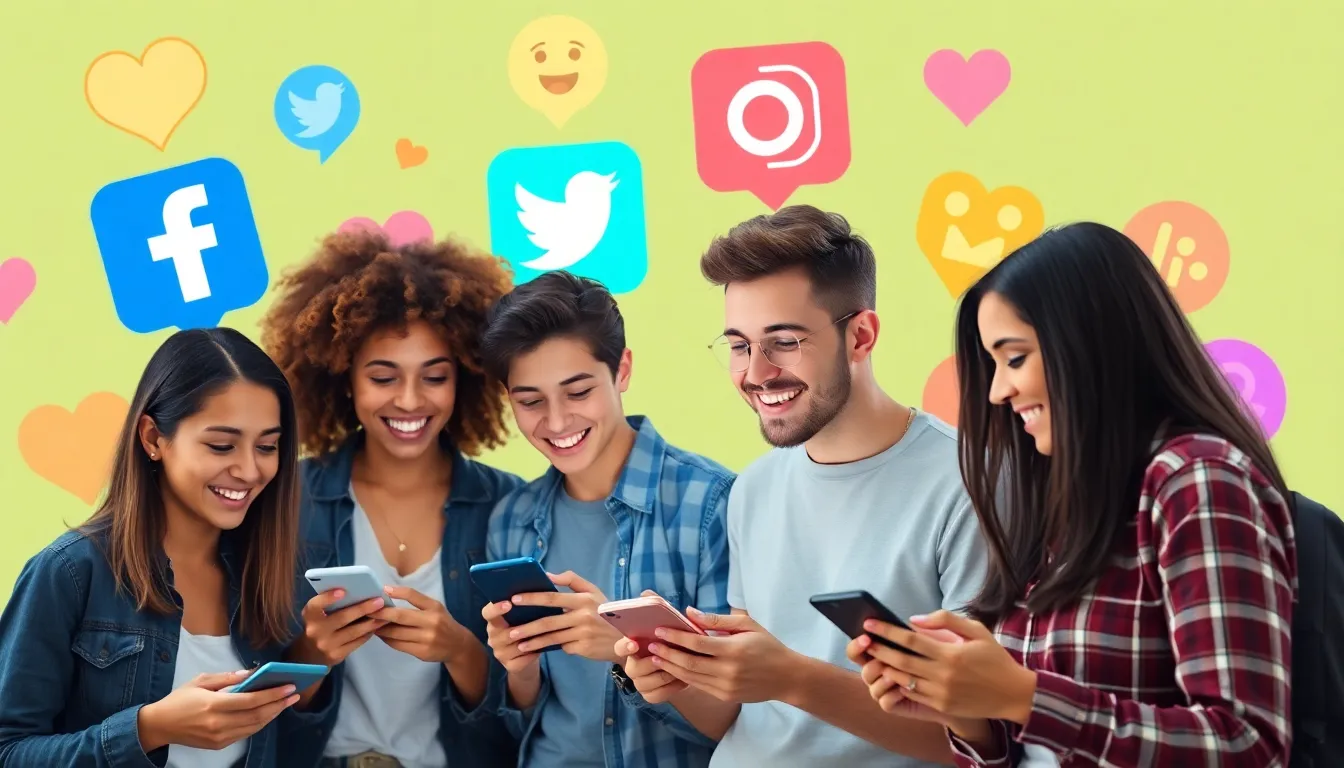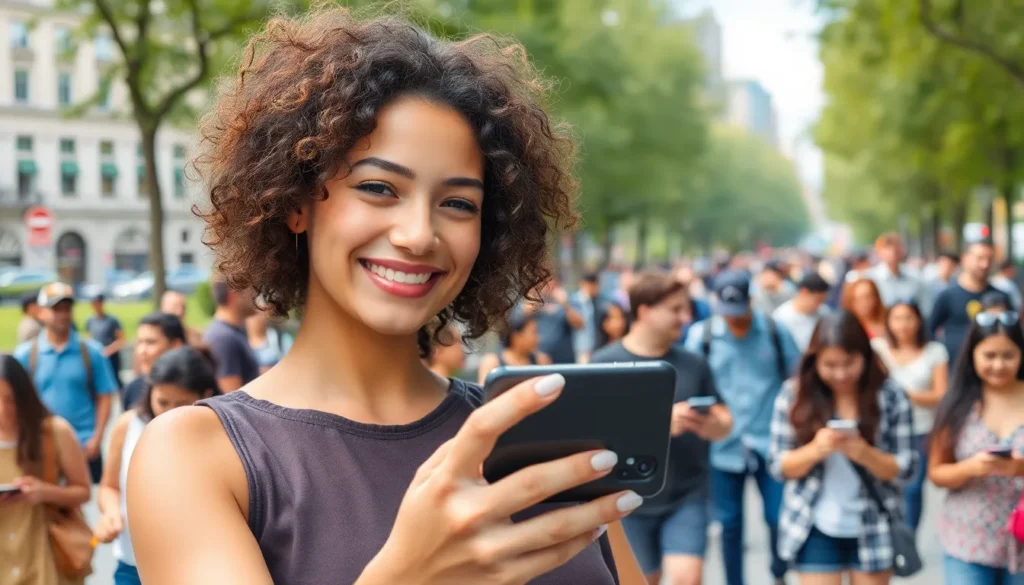In today’s digital age, viral moments have the power to captivate audiences and shape conversations across the globe. From hilarious memes to unexpected celebrity antics, these fleeting instances can ignite social media feeds and leave lasting impressions. They often reflect cultural trends and societal shifts, making them a fascinating phenomenon to explore.
As people share and engage with these snippets of life, they create a sense of connection and community. Viral moments not only entertain but also influence marketing strategies and brand narratives. Understanding what makes these moments resonate can unlock insights into the ever-evolving landscape of online communication. Dive into the world of viral moments and discover how they impact our lives and shape our digital experiences.
Table of Contents
ToggleUnderstanding Viral Moments
Viral moments represent significant instances in digital communication that captivate large audiences quickly. These occurrences shape cultural narratives and influence collective discussions across platforms.
Definition of Viral Moments
Viral moments are events or content pieces that achieve rapid online popularity, often spreading through social media platforms or digital channels. They usually involve images, videos, or memes that resonate with users, prompting shares and reactions that amplify their reach. Examples include viral challenges, impactful tweets, or notable celebrity actions that capture public attention.
Characteristics of Viral Moments
- Timeliness: Viral moments often align with current events, trends, or societal issues, capitalizing on the immediacy of online conversations.
- Relatability: Content that resonates personally with users encourages sharing and engagement, increasing its likelihood of going viral.
- Shareability: Easy-to-share formats, such as GIFs or short clips, enhance the potential for rapid dissemination across platforms.
- Emotion: Evoking strong emotions, whether humor, nostalgia, or outrage, contributes to the viral potential as users are more inclined to share content that elicits a reaction.
- Surprise: Unexpected elements or twists in the content can capture attention, leading to increased engagement and shares.
Understanding these characteristics aids in recognizing what types of content may generate viral moments and informs strategies for effective digital communication.
The Impact of Social Media

Social media significantly influences viral moments, shaping how content spreads and engages audiences worldwide. Platforms facilitate rapid dissemination, allowing trends to emerge and capturing the collective attention of users.
Platforms That Drive Viral Moments
- Facebook: Facebook reaches diverse demographics, providing a vast user base for viral content. Posts with high engagement often gain traction due to shares and reactions.
- Twitter: Twitter’s real-time format allows trending topics to emerge quickly. Hashtags play a crucial role in unifying discussions around viral moments.
- Instagram: Instagram focuses on visual content, making it effective for memes and short videos. The platform’s Stories feature contributes to spontaneous sharing.
- TikTok: TikTok’s algorithm promotes engaging short-form videos, fostering creativity. Users often participate in challenges, leading to widespread adoption of content.
- YouTube: YouTube enables longer video formats that can explain and amplify viral moments. Viral challenges and trends often originate from popular channels.
The Role of Algorithms
- Content Discovery: Algorithms prioritize content likely to generate engagement. This practice ensures viral moments reach a broader audience through tailored recommendations.
- User Behavior: Algorithms analyze user interactions to predict what content resonates. By leveraging past behavior, platforms enhance the visibility of trending moments.
- Trends and Timing: Algorithms adjust to current trends, promoting timely content. Viral moments often coincide with significant cultural events or popular discussions.
- Engagement Metrics: High engagement metrics (likes, shares, comments) signal algorithms to amplify content. This creates a feedback loop that propels certain moments into viral status.
- Platform Differences: Each platform employs unique algorithms, affecting how and when content goes viral. Understanding these differences aids in crafting shareable content that resonates across various platforms.
Case Studies of Notable Viral Moments
Viral moments illustrate the power of digital communication, often reshaping culture and influencing online discourse. The following sub-sections highlight significant memes and events that have captured widespread attention.
Memes That Changed the Internet
- Distracted Boyfriend: This stock photo depicting a man checking out another woman while his girlfriend looks on disapprovingly became a global meme. Users applied it to various scenarios illustrating infidelity, distraction, and shifting loyalties.
- Woman Yelling at a Cat: Featuring a woman yelling and a confused cat at a table, this image represents relatable emotions and humorous situations. It spawned countless adaptations, reflecting various everyday frustrations.
- Pepe the Frog: Initially intended as a harmless cartoon character, Pepe evolved into a symbol used across various online communities. Its transformation prompted discussions about internet culture and representation.
- Drakeposting: This format features rapper Drake showcasing preference through two contrasting images. It quickly gained traction as a means for humorously expressing choices, resonating with diverse audiences.
Events That Went Viral
- Ice Bucket Challenge: In 2014, this charity initiative encouraged participants to dump ice water on themselves to raise awareness for ALS. The challenge went viral, generating over $220 million in donations and leading to significant contributions to ALS research.
- #BlackLivesMatter Movement: Beginning in 2013, this movement gained momentum after several high-profile incidents of police brutality. The hashtag became a rallying cry, mobilizing protests and discussions on systemic racism across social media platforms.
- Yanny or Laurel Audio Clip: An audio clip that divided listeners into two camps, hearing either “Yanny” or “Laurel.” This phenomenon sparked discussions on perception and the nature of auditory experiences, leading to widespread sharing and engagement.
- The Dress: A photo of a dress ignited debate over its color, with viewers polarized between perceiving it as white and gold or blue and black. This event showcased how a simple photo could highlight differences in perception.
These examples illustrate how memes and events can galvanize communities, foster discussions, and influence both cultural and social landscapes.
The Psychology Behind Viral Moments
Understanding the psychology behind viral moments reveals how they captivate audiences and stimulate engagement. Several factors drive content to achieve viral status, making it essential to analyze the underlying mechanics.
Why Content Goes Viral
Content gains viral traction due to several key factors:
- Relevance: Timely content often connects with current events, ensuring high interest levels.
- Relatability: Content that reflects shared experiences resonates more deeply with audiences.
- Shareability: Easy-to-share formats encourage wider distribution across platforms.
- Surprise and Humor: Unexpected or humorous elements lead to higher engagement and sharing rates.
These factors create a foundation for identifying potential viral content.
Emotional Triggers and Engagement
Emotional triggers significantly enhance audience engagement. Effective viral content often evokes specific emotions such as:
- Joy: Content that induces laughter or happiness tends to spread quickly.
- Sadness: Heartwarming or poignant stories can inspire sharing for empathy.
- Anger: Content that strikes a chord about injustice often initiates conversations and movement.
- Fear: Content that highlights threats or urgency can prompt immediate sharing to raise awareness.
By leveraging these emotional triggers, creators can cultivate stronger connections with viewers, increasing the likelihood of content becoming viral.
Viral moments play a pivotal role in shaping the digital landscape. They not only engage audiences but also influence broader cultural conversations. By understanding the characteristics that contribute to virality, individuals and brands can craft content that resonates deeply with viewers.
The emotional triggers and relatability behind these moments foster community and spark vital discussions. As social media continues to evolve, the ability to harness the power of viral content will remain essential for effective communication and marketing strategies. Embracing these insights can lead to more impactful connections in an ever-changing online world.




